Backyards Are a Way to Promote Environmental Justice and Biodiversity Conservation in Brazilian Cities
Abstract
Author Contributions
Funding
Institutional Review Board Statement
Data Availability Statement
Acknowledgments
Conflicts of Interest
References
- Dow, K. Social dimensions of gradients in urban ecosystems. Urban Ecosyst. 2000, 4, 255–275. [Google Scholar] [CrossRef]
- Schell, C.J.; Dyson, K.; Fuentes, T.L.; Des Roches, S.; Harris, N.C.; Miller, D.S.; Lambert, M.R. The ecological and evolutionary consequences of systemic racism in urban environments. Science 2020, 369, eaay4497. [Google Scholar] [CrossRef] [PubMed]
- MacGregor-Fors, I.; Escobar-Ibáñez, J.F. Avian Ecology in Latin American Cityscapes; Springer: Berlin/Heidelberg, Germany; Basel, Switzerland, 2017. [Google Scholar]
- Aleixo, B.; Rezende, S.; Pena, J.L.; Zapata, G.; Heller, L. Human Right in Perspective: Inequalities in Access to Water in a Rural Community of the Brazilian Northeast. Ambiente Soc. 2016, 19, 63–84. [Google Scholar] [CrossRef]
- Schlosberg, D. Theorising environmental justice: The expanding sphere of a discourse. Environ. Politics 2013, 22, 37–55. [Google Scholar] [CrossRef]
- Gyula, N. Environmental justice and its geographical aspects in Hungary. Tér És Társadalom 2021, 35, 76–103. [Google Scholar]
- Bullard, R.D.; Glenn, S.J. Environmentalism and public policy: Environmental justice: Grassroots activism and its impact on public policy decision making. J. Soc. Issues 2000, 56, 555–578. [Google Scholar] [CrossRef]
- Angeoletto, F.; Sanz, J.P.R.; Albertin, R.; Silva, F.F.D. The grass is always greener on the other side of the fence: The flora in urban backyards of different social classes. Ambiente Soc. 2017, 20, 1–20. [Google Scholar] [CrossRef]
- Sant’Anna de Medeiros, N.; do Carmo, D.L.; Priore, S.E.; Santos, R.H.S. Diverse food in urban gardens in the promotion of food and nutrition security in Brazil: A review. J. Sci. Food Agric. 2020, 100, 1383–1391. [Google Scholar] [CrossRef]
- Lima, G.F. Quintais, Miséria Paisagística e Efeito Luxúria: Como Conservar e Democratizar a Flora nas Cidades Brasileiras? Master’s Thesis, Universidade Federal de Rondonópolis, Rondonópolis, Brazil, 2022. [Google Scholar]
- Nowak, D.J.; Hirabayashi, S.; Bodine, A.; Greenfield, E. Tree and forest effects on air quality and human health in the United States. Environ. Pollut. 2014, 193, 119–129. [Google Scholar] [CrossRef]
- Säumel, I.; Weber, F.; Kowarik, I. Toward livable and healthy urban streets: Roadside vegetation provides ecosystem services where people live and move. Environ. Sci. Policy 2016, 62, 24–33. [Google Scholar] [CrossRef]
- Anderson, P.M.; Potgieter, L.J.; Chan, L.; Cilliers, S.S.; Nagendra, H. Urban plant diversity: Understanding informing processes and emerging trends. Urban Ecol. Glob. South 2021, 1, 145–168. [Google Scholar]
- Serpa, A. Fala Periferia! Uma Reflexão Sobre a Produção do Espaço Periférico Metropolitano; Editora da UFBA: Salvador, Brazil, 2001. [Google Scholar]
- Angeoletto, F.; Tryjanowski, P.; Santos, J.; Martinez-Miranzo, B.; Leandro, D.; Bohrer, J.; Johann, J.M.; Fellowes, M.D.E. Will Brazilian City Dwellers Actively Engage in Urban Conservation? A Case Study with the Charismatic Neotropical Blue-and-Yellow Macaw (Ara ararauna). Birds 2022, 3, 234–244. [Google Scholar] [CrossRef]
- IUCN. Red List of Threatened Species: Ara ararauna. Available online: https://www.iucnredlist.org/search?query=Ara%20ararauna&searchType=species (accessed on 1 January 2023).
- Duarte, T.E.P.N.; Leite, L.B. Cidades médias no Cerrado Brasileiro: Desafios para a conservação da biodiversidade. Terr Plur. 2020, 14, 1–7. [Google Scholar] [CrossRef]
- Ismail, S.A.; Pouteau, R.; van Kleunen, M.; Maurel, N.; Kuefer, C. Horticultural plant use as a so-far neglected pillar of ex situ conservation. Conserv. Lett. 2021, 14, e12825. [Google Scholar] [CrossRef]
- Segar, J.; Callaghan, C.T.; Ladouceur, E.; Meya, J.N.; Pereira, H.M.; Perino, A.; Staude, I.R. Urban conservation gardening in the decade of restoration. Nat. Sustain. 2022, 5, 649–656. [Google Scholar] [CrossRef]
- Rosenzweig, M.L. Win-Win Ecology: How the Earth’s Species Can Survive in the Midst of Human Enterprise; Oxford University Press: Oxford, UK, 2003. [Google Scholar]
- Angeoletto, F.H.S.; Richard, E.; Santos, J.; Guedes, N.; Oliveira, S.L.; Albertín, R.M.; da Silva, N.M. When we think of urban afforestation in Brazil, what comes to mind is a mouth that has lost its teeth. Terr Plur. 2023, 17, e2321654. [Google Scholar]
- Souza, F.L.; Fenoglio, M.S.; Angeoletto, F. To Be a Brazilian City Dweller, Sometimes We Must Learn to Say Enough! Sustainability 2023, 15, 3699. [Google Scholar] [CrossRef]
- Soanes, K.; Lentini, P.E. When cities are the last chance for saving species. Front. Ecol. Environ. 2019, 17, 225–231. [Google Scholar] [CrossRef]
- Santangelo, J.S.; Ness, R.W.; Cohan, B.; Fitzpatrick, C.R.; Innes, S.G.; Koch, S.; Johnson, M. Global urban environmental change drives adaptation in white clover. Science 2022, 375, 1275–1281. [Google Scholar] [CrossRef]
- Villaseñor, N.R.; Chiang, L.A.; Hernández, H.J.; Escobar, M.A. Vacant lands as refuges for native birds: An opportunity for biodiversity conservation in cities. Urban For. Urban Green. 2020, 49, 126632. [Google Scholar] [CrossRef]
- González-García, A.; Sal, A.G. Private urban greenspaces or “patios” as a key element in the urban ecology of tropical central America. Hum. Ecol. 2008, 36, 291–300. [Google Scholar] [CrossRef]
- Angeoletto, F. Planeta Ciudad: Ecología Urbana y Planificación de Ciudades Medias de Brasil. Bachelor’s Thesis, Universidad Autónoma de Madrid, Madrid, Spain, 2012. [Google Scholar]
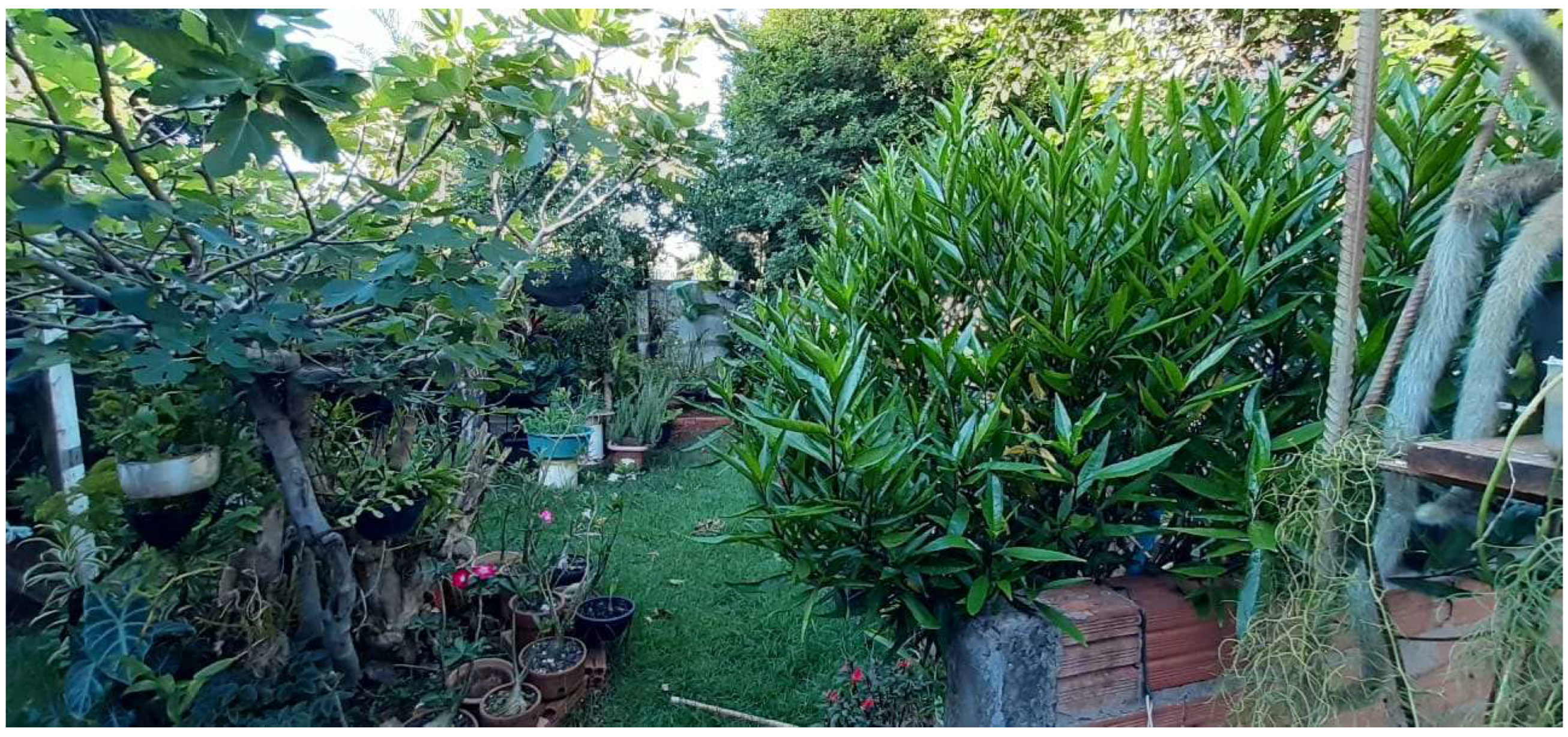
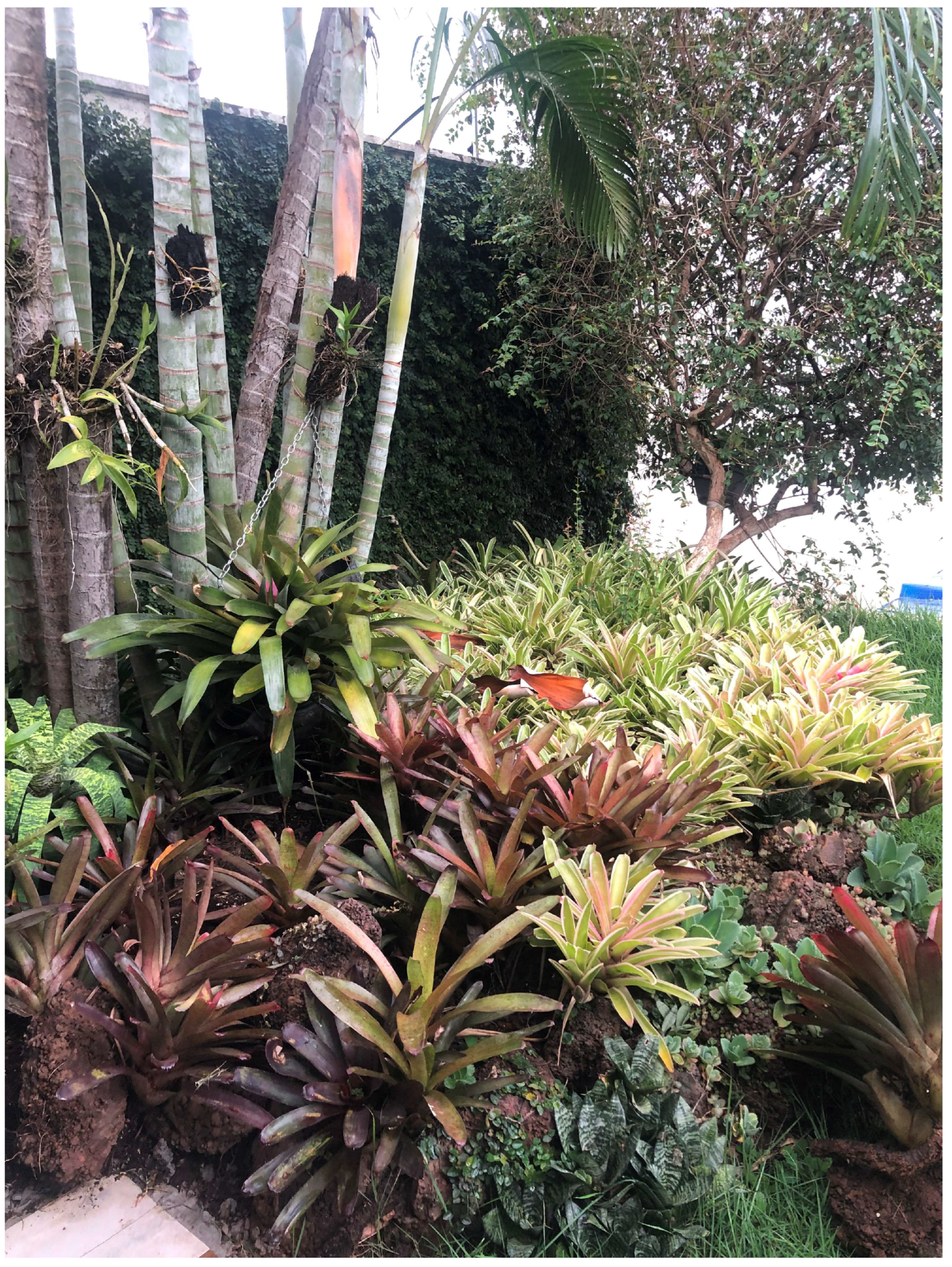
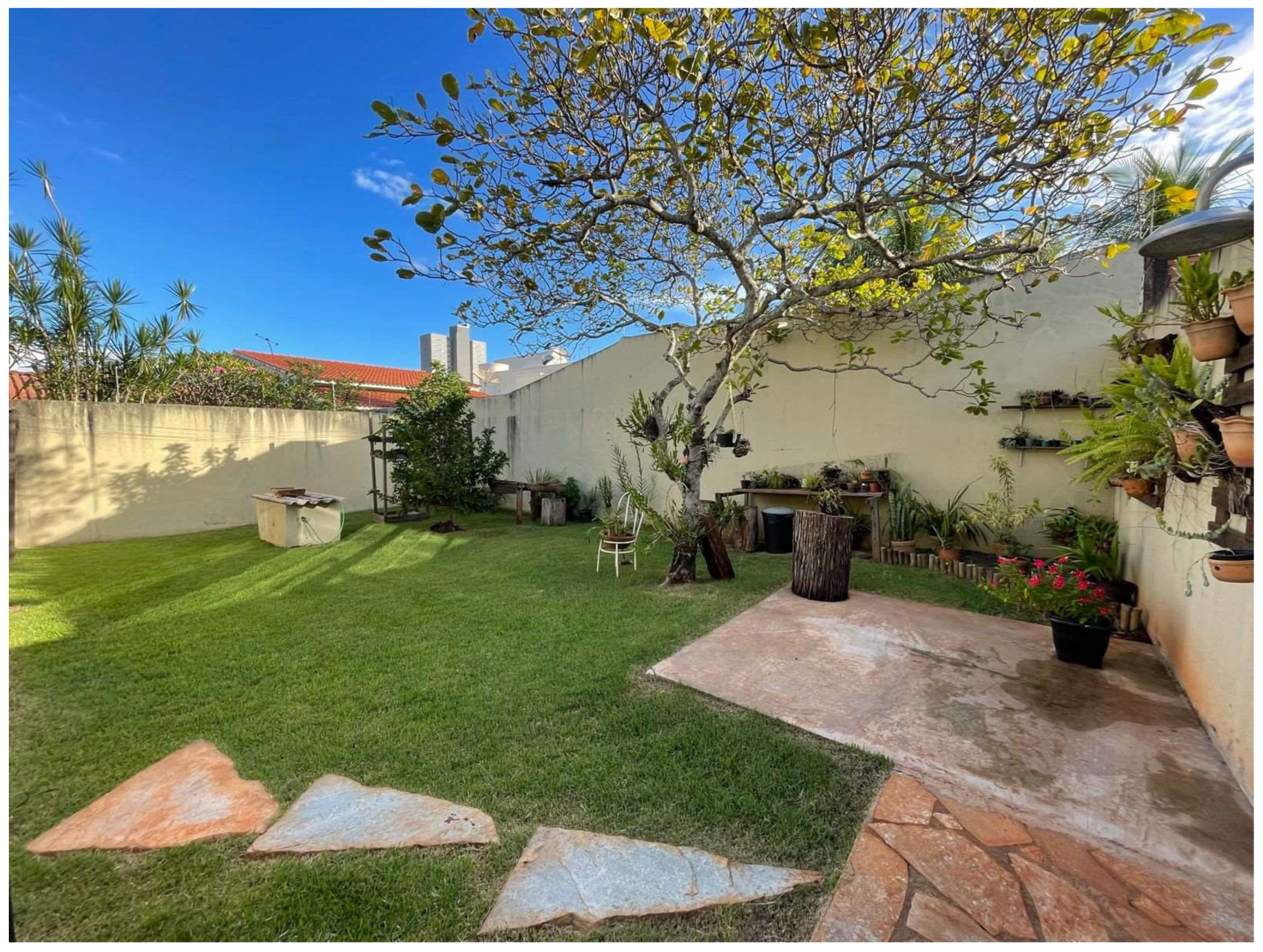
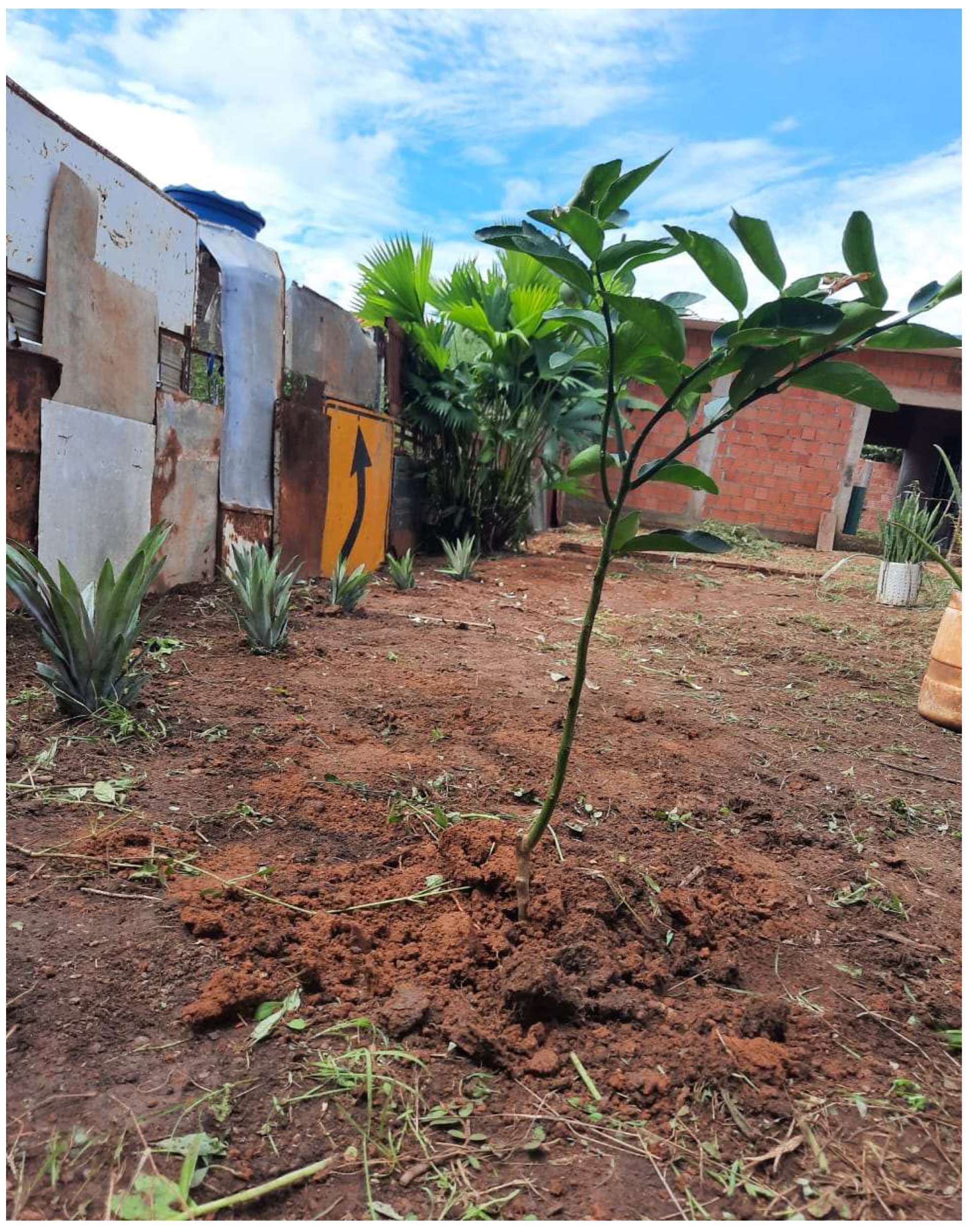
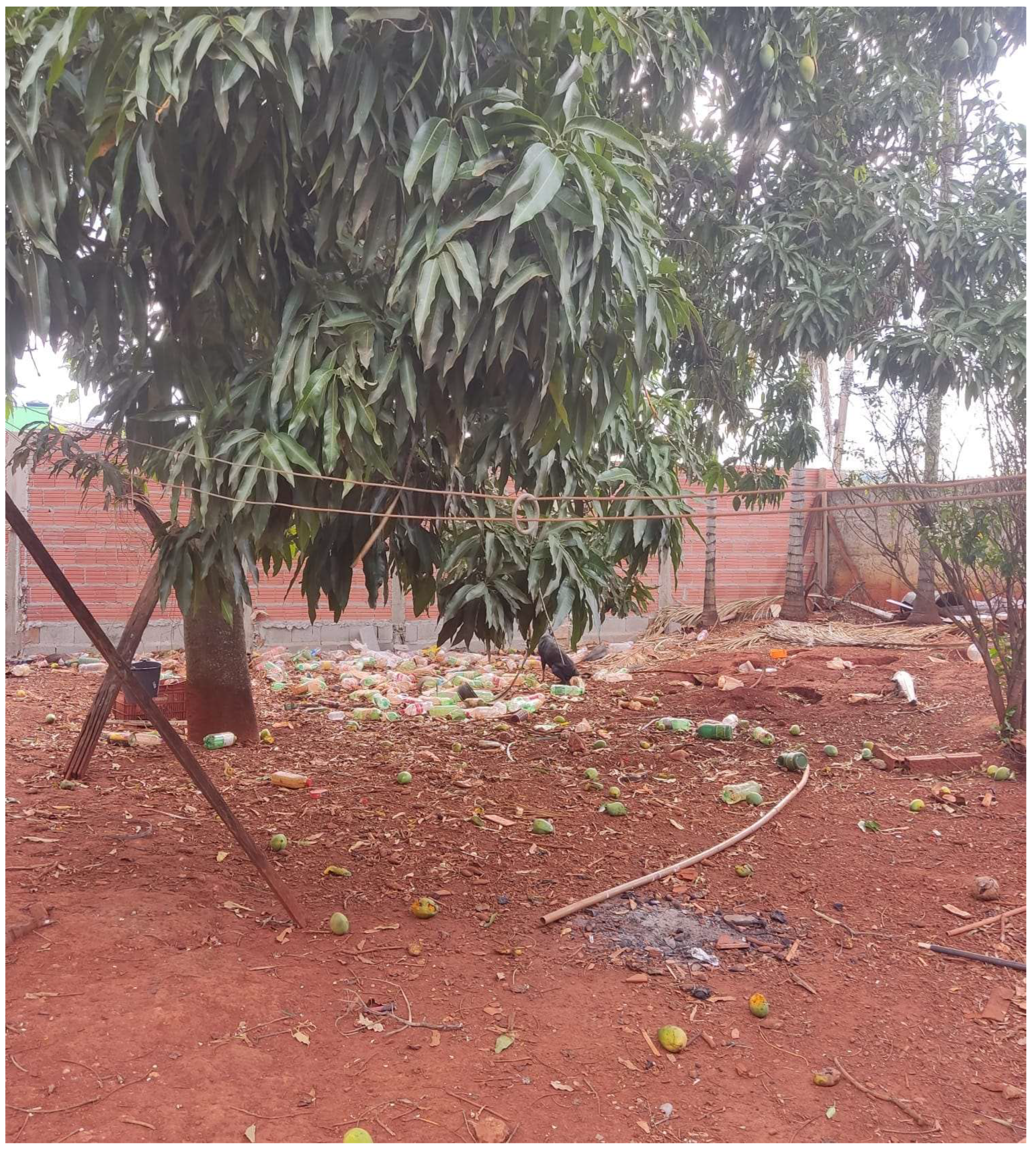

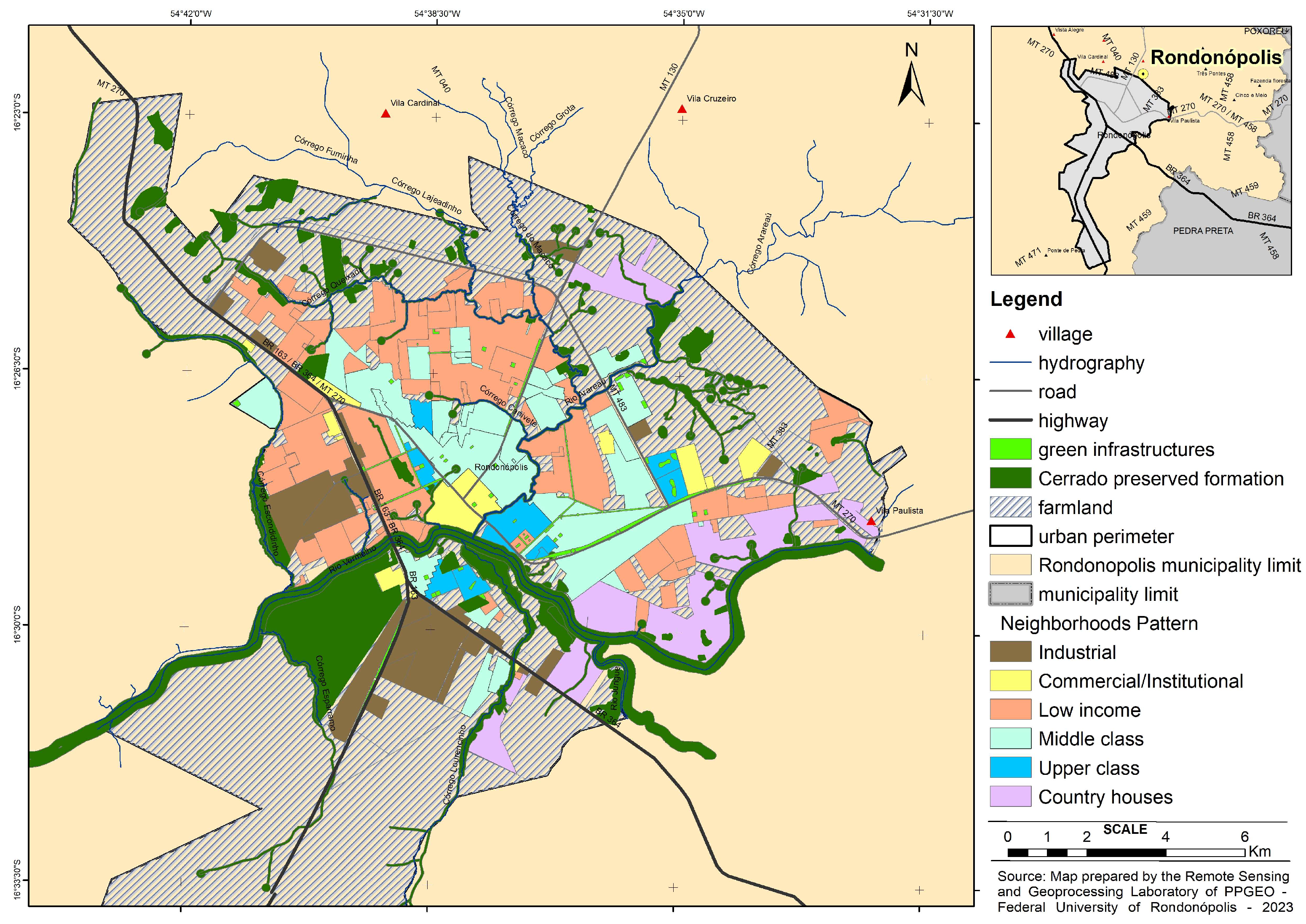
Disclaimer/Publisher’s Note: The statements, opinions and data contained in all publications are solely those of the individual author(s) and contributor(s) and not of MDPI and/or the editor(s). MDPI and/or the editor(s) disclaim responsibility for any injury to people or property resulting from any ideas, methods, instructions or products referred to in the content. |
© 2023 by the authors. Licensee MDPI, Basel, Switzerland. This article is an open access article distributed under the terms and conditions of the Creative Commons Attribution (CC BY) license (https://creativecommons.org/licenses/by/4.0/).
Share and Cite
Lima, G.F.; Correa Santos, J.W.M.; Albertin, R.M.; Martínez-Miranzo, B.; Souza, F.L.; Angeoletto, F. Backyards Are a Way to Promote Environmental Justice and Biodiversity Conservation in Brazilian Cities. Diversity 2023, 15, 815. https://doi.org/10.3390/d15070815
Lima GF, Correa Santos JWM, Albertin RM, Martínez-Miranzo B, Souza FL, Angeoletto F. Backyards Are a Way to Promote Environmental Justice and Biodiversity Conservation in Brazilian Cities. Diversity. 2023; 15(7):815. https://doi.org/10.3390/d15070815
Chicago/Turabian StyleLima, Gedeone Ferreira, Jeater Waldemar Maciel Correa Santos, Ricardo Massulo Albertin, Beatriz Martínez-Miranzo, Franco L. Souza, and Fabio Angeoletto. 2023. "Backyards Are a Way to Promote Environmental Justice and Biodiversity Conservation in Brazilian Cities" Diversity 15, no. 7: 815. https://doi.org/10.3390/d15070815
APA StyleLima, G. F., Correa Santos, J. W. M., Albertin, R. M., Martínez-Miranzo, B., Souza, F. L., & Angeoletto, F. (2023). Backyards Are a Way to Promote Environmental Justice and Biodiversity Conservation in Brazilian Cities. Diversity, 15(7), 815. https://doi.org/10.3390/d15070815







